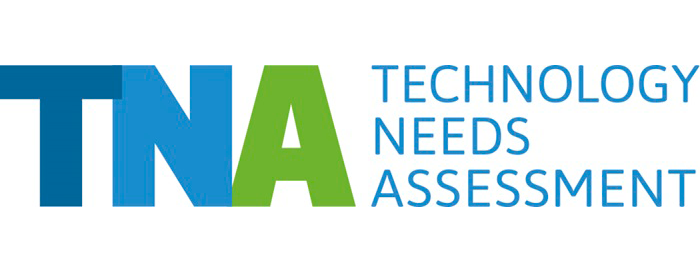A group of Least Developed Countries (LDCs) and Small Island Developing States (SIDS) are well on their way to developing concrete action plans for climate technology implementation.
As part of the fourth round of the global Technology Needs Assessment project (TNA) the fifteen participating countries have now almost all prioritized their key sectors and climate technologies for adaptation and mitigation, and have moved on to the crucial second TNA step of identifying barriers to increased deployment, and developing measures overcome the barriers.
These measures will be combined into implementable actions in close consultation with the responsible national authorities, and will provide the basis for the third step, the Technology Action Plans (TAPs), that form the main outputs of the project.
During 2023, country teams attended regional training workshops. Here the teams took advantage of opportunities to interact with the other country teams, sharing experience and ideas, as well as gaining expertise in the analytical methods required for the second and third steps of TNA. Guidance was provided by staff from UNEP Copenhagen Climate Centre and the respective Regional Centres.
Water, agriculture, energy and transport in focus
Countries have generally prioritized two or three sectors each for adaptation and mitigation, and two to three technologies in each sector. The most frequent sectors chosen by countries, consistent with their NDCs, are Agriculture and Water for adaptation, and Energy and Transport for mitigation.
In a few cases, Coastal Zones are chosen within adaptation, reflecting the challenges being met by these countries. Similarly, Forestry/AFOLU and Waste Management are prioritised for mitigation in a few countries.
This does not mean that these sectors are the only sectors relevant for climate change, but rather that the limited project resources can best provide in-depth impact by concentrating on a few sectors and technologies where concentrated effort can contribute significantly to increased diffusion.
Technologies based on national needs
Within these chosen sectors there are recurrent technologies across the countries. Water supply is an important input for agriculture, which is itself the major productive sector in almost all of the countries. Combined with the increasing water challenges faced by countries because of the changing climate, ensuring reliable water supply is an overriding priority for enhancing resilience.
Thus, technologies like rainwater harvesting and collecting, drip irrigation, and solar-powered water systems feature in many countries’ portfolios for technologies that require significantly enhanced deployment to adapt to climate change.
Several of the participating small island states are already experiencing serious climate change impacts involving sea-level rise and extreme events. Here technologies involving coastal protection, and preparations for population relocation are particularly relevant and prioritized.
Addressing local environmental impacts
In mitigation, while none of the participating LDCs and SIDS contribute significantly to global GHG emissions, there is high priority for clean and efficient energy technologies to provide essential development benefits and address local environmental impacts.
Technologies like solar lighting, efficient cookstoves, energy-efficient appliances feature frequently in many countries’ prioritized lists. Transport is also a major sector with climate mitigation and developmental co-benefits.
While electric vehicles are still beyond the reach of much of the population in the participating countries, efficient public transport systems, renewal and maintenance of the vehicle fleet and road infrastructure, receive high priority.
Technologies in the Waste and Forestry/AFOLU sectors are also important in a number of the countries, with potential impacts for both GHG reduction and local sustainable development.
More on the Technology Needs Assessments
Most of the participating LDCs and SIDS are expected to complete the Barrier Analysis and Enabling Framework (BAEF) step in early 2024, and the Technology Action Plans (TAPs), including policy briefs, by mid-2024. Country projects culminate in draft concept notes to seek financing for selected technology solutions.
